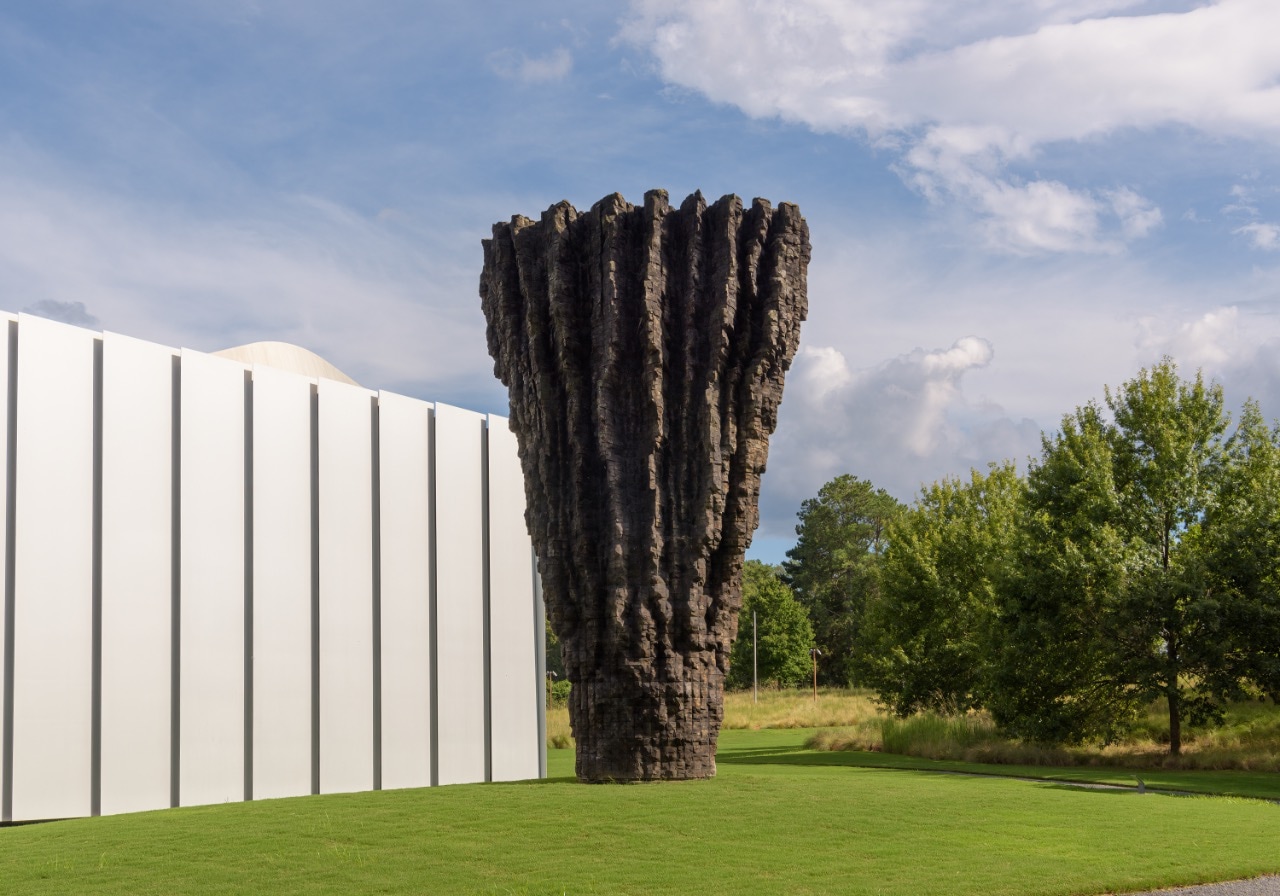Ogromna
Ursula von Rydingsvard[[translate(episode,'title')]]
[[translate(episode,'audioCredit') || translate(episode,'credit')]][[translate(episode,'title')]]
[[translate(episode,'audioCredit') || translate(episode,'credit')]]Audio Transcript
*Ogromna*, by Ursula von Rydingsvard, was commissioned in 2009. To create the piece, Von Rydingsvard selected 4 x 4 cedar wood beams as her material. She painstakingly cut, chipped, incised, stacked, and fastened the beams together, transforming the machine-cut wood into the undulating, honeycombed layers of fluid and malleable surfaces belonging to a looming, vessel-shaped structure — one that references the rocky cliff of a natural landscape, the human body, and architecture.
The colossal scale of the sculpture and the irregular markings that cover its surface belie the artist’s labor-intensive process.
Von Rydingsvard has used wood as her primary medium for over 30 years. She once wrote:
“My love for wood is part of my history. I come from a long line of Polish peasant farmers, and they were surrounded with wood — wooden homes, wooden fences, domestic implements, wooden tools to farm the land. When you enter any of those houses, you’ll see right outside a huge stack of firewood, usually quite beautifully stacked, with smoothly cut ends.”
To create the unique silvered sheen of the work, Von Rydingsvard applied graphite to the surface and also a wood preservative to aid in the longevity of the work. Museum conservators periodically reapply the graphite and preservative as needed.
“Ogromna” is a Polish adjective that describes something huge, monumental and powerful, and with the “a” at the end of the word, it also designates it as something female or feminine.
Von Rydingsvard selected the location for *Ogromna*, near West Building and around the corner from the Rodin Courtyard, for its ability to serve as a neutral background. As the artist herself will tell you, the placement of the sculpture bears equal weight to the work that goes into bringing it to life.
"Choosing the site is always a pivotal part of what the piece needs to be. I wanted to have a neutral background against which my usually dark surfaces can rest, so that the profile can show itself off in a more dramatic way."
Ursula von Rydingsvard, *Ogromna*, 2009, cedar and graphite, H. 20 ft. 7 in. × W. 12 ft. 4 in. × D. 11 ft. 8 in., Commissioned with funds from the North Carolina State Art Society (Robert F. Phifer Bequest)
